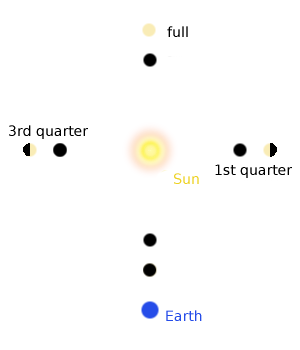![Venus Transit 2004, Vrchlického Gymnázium Klatovy [logo]](../img/logo2.gif)
|
![Vrchlického Gymnázium Klatovy [znak]](../img/znak_gym.gif)
|
||||||||||||||||||||||||||
Menu  Introduction
About Venus
About Sun
Our observation
Photographies
Links
Our school
Physical section
About autors
Introduction
About Venus
About Sun
Our observation
Photographies
Links
Our school
Physical section
About autors
Language  Česky
English
Česky
English
Download  Zip archive
Zip archive
|
About the VenusYou can read:
There are really extreme conditions on the surface, because the atmosphere is composed predominantly of hothouse gases, which assure rather high temperature for all day long. The highest temperatures reach magnitudes of 480°C. The atmospheric pressure is usually 95times higher than the atmospheric pressure on the Earth. On the Venus are lot of volcanoes, some of which are almost 3 km high and they are 500 km in diameter.
How to find the Venus in the sky?You can find Venus relatively easy in the nightly sky, because it belongs to the best visible objects. The Venus is visible only after the sunset or before the sunrise (alike Mercury) owing to her trajectory, which has only a short distance to the Sun. If we conclude to observe our sisterly planet in the evening, we'll aim our eyes westward. If we prefere an observation in the morning, we'll search for Venus above the East horizon. It's obvious that we can use a software for exactly specification of the current position of the planet. Author: Tomáš Jirotka |
||||||||||||||||||||||||||
| © 2004 Fyzikální sekce, Gymnázium Jaroslava Vrchlického Klatovy, Česká republika | |||||||||||||||||||||||||||
 The Venus belongs to so-called inside planets owing to its position with regard to the Earth and the Sun. It [same] enables to observe its phases (like the Moon, see the picture) and also its transits before the Sun disc. Moreover, Venus is our nearest planet. It isn't so large planet, because its equatorial diameter (12,104 km) is only about 600 km shorter than the equatorial diameter of the Earth. The Venus is also like the Earth a planet with the hard core and its average density makes 5,248 kg.m-3, which is the third highest magnitude in our Solar system. The Venus is again a very interesting planet, because of its ratio of the rotational period and the cycle around the Sun. As the one and only of the planets has the longer day than the year. The day lasts 243 Earth days and 14 minutes while the year is about 224.7 Earth days long.
The Venus belongs to so-called inside planets owing to its position with regard to the Earth and the Sun. It [same] enables to observe its phases (like the Moon, see the picture) and also its transits before the Sun disc. Moreover, Venus is our nearest planet. It isn't so large planet, because its equatorial diameter (12,104 km) is only about 600 km shorter than the equatorial diameter of the Earth. The Venus is also like the Earth a planet with the hard core and its average density makes 5,248 kg.m-3, which is the third highest magnitude in our Solar system. The Venus is again a very interesting planet, because of its ratio of the rotational period and the cycle around the Sun. As the one and only of the planets has the longer day than the year. The day lasts 243 Earth days and 14 minutes while the year is about 224.7 Earth days long.
